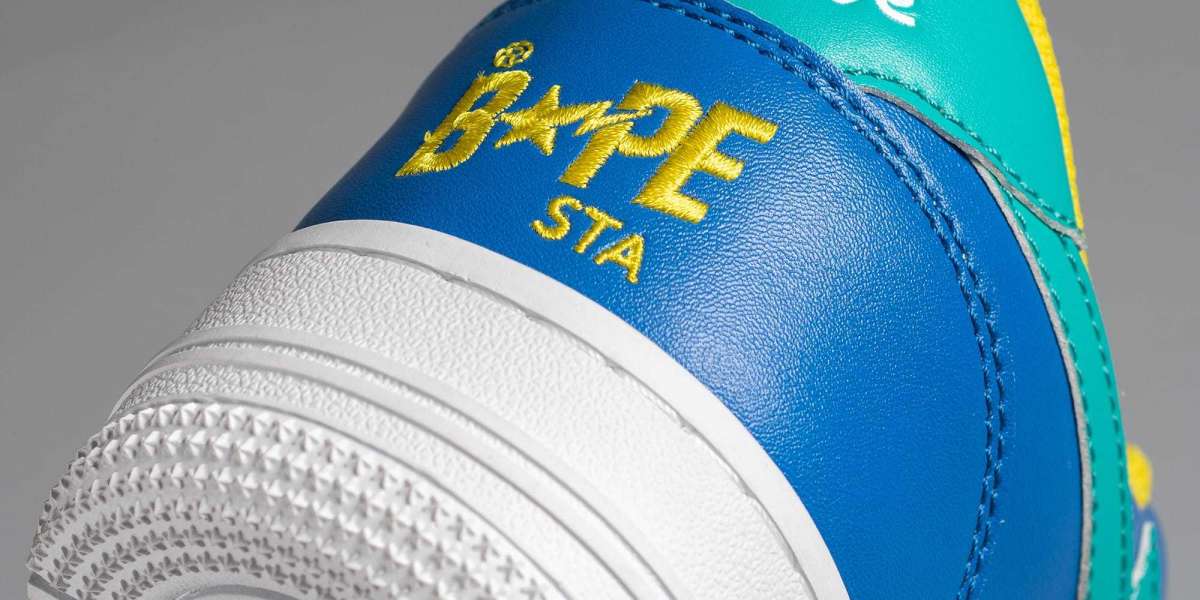BAPESTA sneakers are one of the most recognizable and iconic streetwear items in the fashion world. Designed by the Japanese brand A Bathing Ape (commonly known as BAPE), BAPESTA has become a global phenomenon since its launch in the early 2000s. Characterized by its star-shaped logo, patent leather finish, and bold colorways, the BAPESTA silhouette echoes the classic Nike Air Force 1 but carries its own unique identity rooted in Japanese street culture.
The Origins of BAPESTA in Japanese Streetwear
BAPE was founded in 1993 by Tomoaki Nagao, famously known as NIGO. While the brand initially focused on t-shirts and hoodies, it was the launch of the sneaker that catapulted it into global relevance. Introduced around 2002, the sneaker quickly gained traction due to its eye-catching design and exclusivity. Inspired by American hip-hop and sneaker culture, NIGO used BAPESTA to bridge Japanese street fashion with Western urban aesthetics. The result was a shoe that felt both familiar and innovative at the same time.
Design Features That Define BAPESTA
The most distinctive feature of the BAPESTA is its star logo, called the “STA,” which replaces the Nike swoosh. The shoe also features bold color combinations, glossy patent leather uppers, and the signature BAPE camouflage print in some editions. Unlike traditional sneakers, BAPESTAs often come in limited-edition collaborations and seasonal releases, making each drop highly collectible. The sneaker design is intentionally flashy, appealing to fans who enjoy standing out in a crowd.
BAPESTA’s Role in Hip-Hop and Pop Culture
BAPESTA sneakers gained massive popularity in the early 2000s through co-signs from American rappers and celebrities. Hip-hop icons like Pharrell Williams, Kanye West, and Lil Wayne were among the early adopters who wore BAPESTA sneakers in music videos, concerts, and public appearances. This exposure helped turn BAPESTA into a cultural symbol of luxury and street credibility. Pharrell, in particular, played a significant role in popularizing the shoe in the United States, and his Billionaire Boys Club brand often collaborated with BAPE, creating limited-edition BAPESTA releases.
Limited Editions and Collaborations Boosting Demand
One of the core strategies behind BAPESTA’s success is its use of limited-edition releases and collaborations. BAPE has partnered with multiple brands, artists, and even entertainment franchises to create unique BAPESTA variations. Collaborations with Marvel, Coca-Cola, Adidas, Comme des Garçons, and even Kanye’s former brand Pastelle have kept the silhouette fresh and desirable. The scarcity and collectibility of these editions drive high resale values, which in turn increase the sneaker’s prestige and demand.
BAPESTA and the Resale Market
Due to its limited availability, BAPESTA quickly found a place in the resale market. Collectors and resellers treat rare BAPESTA releases as investments, with some pairs fetching several times their retail price. The hype around each release, fueled by celebrity endorsements and internet forums, has created a secondary economy where owning a pair of rare BAPESTAs is a symbol of both status and taste in streetwear culture. This market dynamic adds another layer of exclusivity to the sneaker.
Comparisons with Nike Air Force 1 and Legal Controversy
BAPESTA’s resemblance to the Nike Air Force 1 sparked significant discussion in the sneaker community. Many critics and fans pointed out the similar sole shape, panel design, and silhouette. However, NIGO has always maintained that the BAPESTA is a homage rather than a copy. Despite some legal tension in the past, the design differences and cultural context of BAPESTA allowed it to stand on its own. Over time, it became less of a derivative and more of an icon in its own right, with collectors appreciating it for its distinct flair and historical value.
The Revival and Reinvention of BAPESTA
After experiencing a decline in visibility in the mid-2010s, BAPESTA saw a revival in recent years. This resurgence was fueled by nostalgia, the rise of retro sneaker trends, and BAPE’s renewed focus on quality and branding. New collaborations with contemporary artists and designers breathed fresh life into the silhouette. BAPESTA also expanded into women’s styles and kid’s sizes, tapping into new demographics and further establishing its place in mainstream fashion.
Global Influence and International Appeal
Although rooted in Japanese street culture, BAPESTA’s influence spans globally. It resonates with sneakerheads in cities like New York, London, Seoul, and Paris. The sneaker's appeal lies in its bold visuals, strong branding, and ability to blend seamlessly with various streetwear aesthetics. Fashion-forward youth in different parts of the world view BAPESTA as a must-have for any serious collection, and social media platforms like Instagram have further amplified its visibility.
How BAPESTA Continues to Shape Sneaker Culture
In a world where sneaker drops happen almost daily, BAPESTA continues to carve out a niche. Unlike other brands that rely on performance technology, BAPESTA thrives purely on style, creativity, and cultural relevance. It is less about athletic performance and more about making a statement. As younger generations explore the origins of streetwear, BAPESTA stands as a historical pillar—a symbol of when fashion, music, and global youth culture merged into one powerful expression.
Conclusion: The Legacy of BAPESTA Sneakers
BAPESTA is more than just a sneaker; it is a movement, a statement, and a legacy. From its roots in Harajuku to its adoption by global celebrities, the BAPESTA silhouette remains one of the most iconic designs in sneaker history. Its fusion of Japanese creativity and American hip-hop influence gave birth to a timeless piece of fashion that continues to evolve. With every release, BAPESTA reinforces its reputation as a symbol of individuality, exclusivity, and bold style.











